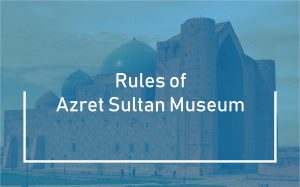Tauke khan was a representative of Kazakh khan’s dynasty of XV–XVIII centuries, Genghis khan and Jochi khan were his ancestors. Using the data of medieval written sources Tauke khan origin could be traced like this: Genghis khan – > Jochi khan – > Ordaejen – > Sartaktay – > Konysha – > Bayan – > Sasybuka – > Erzen – > Shymtay – > Orys khan – > Koyirshak – > Barak khan – > Janibek – * Zhudyk – > Shygay khan – > Esim khan – > Jangir khan – > Tauke khan (Rashid-ad-Din, 1941: 41–48). Tauke khan’s full name was Tauekel Muhamad batyr khan (Sultanov, 2001: 223.). According to Šakarim Kudajberdiev, Tauke khan was son of Jangir khan, born by Kalmyk wife (Kudajberdiev, 1991: 25). Comparing dates of his death and age, we can say that he was born after 1635. In 1635 Jangir khan got caught by oirats. Seven years later he returns to his native land and takes over power. There is speculation that during his period of detention, Jangir khan married Hoshauyt Hondulen’s, thai’s daughter, and in 1636–37 gave birth to Tauke. According to information from Russian scientists, Hondulen Ubaishi called Jangir khan his son, and being Zhalantos batyr’s close frined, Jangir khan didn’t join Batyr Khong Tayiji. Dalay taishy, Hoshaut Abylai taishy and many other famous people refused to join him as well. First time Tauke khan was mentioned in written sources in early 1650. Over the years, many times did Jangir khan send ambassadors to East Turkestan Chagatay rulers to fight with Dzungarians. A young Tauke khan was amongst those. Together with ambassadors he visited East Turkestan (Tarih-i Shah Mahmud and Mirza Fazil Choras, 1969: 385). According to Šakarim and A.I. Levshin materials it became obvious that before Tauke khan took over, there were permanent battles for the throne and magnified tribal conflicts. A.I. Levshin wrote that those conflicts lasted for several years, while as per some scientists opinion conflicts lasted for 28 years since 1652 after Jangir khan’s death and up to 1680 when Tauke khan took over. As per historical sources, Tauke khan ruled from 1680. There is no information how he seized the power. Nevertheless, we can assume that in the beginning of 1650s Tauke khan was too young, while by 1680 he reached the age of 40–50. It is a well-known fact that at that age human is enough experienced, intelligent and mature. Tauke khan’s distinctive qualities were wisdom and art of speaking, ability to think made him especially interesting among ruling dynasty. Besides, as we mentioned before, his ancestors had the throne. He was direct descendant of Jangir khan and since childhood took active part in public life. This all increased the possibility to claim for throne.
After coming to power, Tauke khan had a policy which helped him to stop conflicts and bloodsheds, as well as continuous disputes inside khanate itself. Then a quiet life began. For 28 years bloody battles took place before Tauke khan came to power. A peaceful and quite life during Tauke khan considered to be “quite times”. The main goal of Tauke khan’s internal and external policy who ruled over 30 years, was to keep the unity of Kazakh people and integrity of Kazakh land. The biggest case of his life was publication and introduction of code of laws “Seven statutes”. The reasons to adopt “Seven statutes” were level of internal and external condition of Kazakh society in the second part of XVII century. As you know, lack or weakness of central authority leads to non-fulfillment and violation of laws and rules, development of unlawful acts in political and public life, growth of robberies, violence and other. After taking charge, first of all Tauke khan tried to regulate internal public life and political situation. Those were preconditions and causes for “seven statutes”. In history, Tauke khan tightly associated with the law “Seven statutes”. Together with beys he compiled Kazakh customs and traditions, relying on his experience to resolve disputes, wisdom conclusions and statements and supplementing provisions of the law “Free path of Kasym khan” and “Ancient journey of Esim khan” according to modern age, Tauke developed code of laws “Seven statutes”, known as “Tauke khan’s laws” in Russian editions. Tauke khan made every effort to solve disputable issues with neighboring countries and develop close relationship. This is particularly true for ashtarxoniylar dynasty and state of Russia. With his wisdom, Tauke khan people named him “Az-Tauke”. During his ruling, Russian embassy on Kazakh land was headed by diplomat M. Tevkelev. In his document dated 1748, he mentioned that: “Tauke khan was very wise person, all Kyrgyzs (Kazakhs) treated him with big respect”. People remember the period of Tauke khan ruling as “Golden age” of Kazakh khanate. Famous Russian historian Alexey Levshin compared Tauke khan with wise Lycurgus of Sparta. Vladimir Velyaminov-Zernov was first to assume that Tauke khan died in 1718 (VelyaminovZernov, 1864: 380–381). Since then, all historical sources and special researches consider that to be the date of Tauke khan’s death. Tauke khan was buried nearby mausoleum of Khodja Ahmed Yasawi in Turkestan, many years being capital of Kazakh khanate. Tauke khan’s ancestors were top of political status on the territory of Kazakhstan during ХШ–ХVІІ centuries and deeply embedded political history of those times, contributing the foundation and development of Kazakh nation. In turn, during his ruling, Tauke khan continued the journey of his ancestors making great contribution to development of Kazakh people, and hence, had been among historical figures remembered by people.










